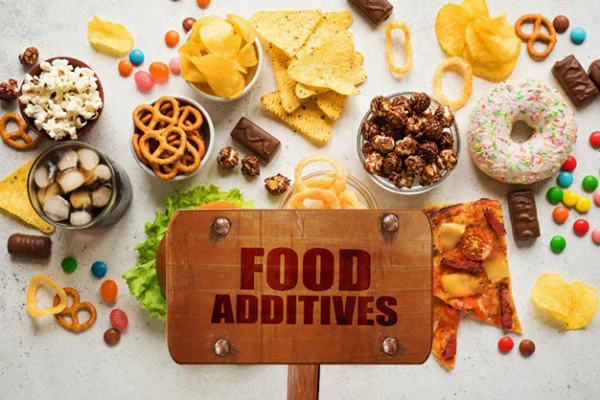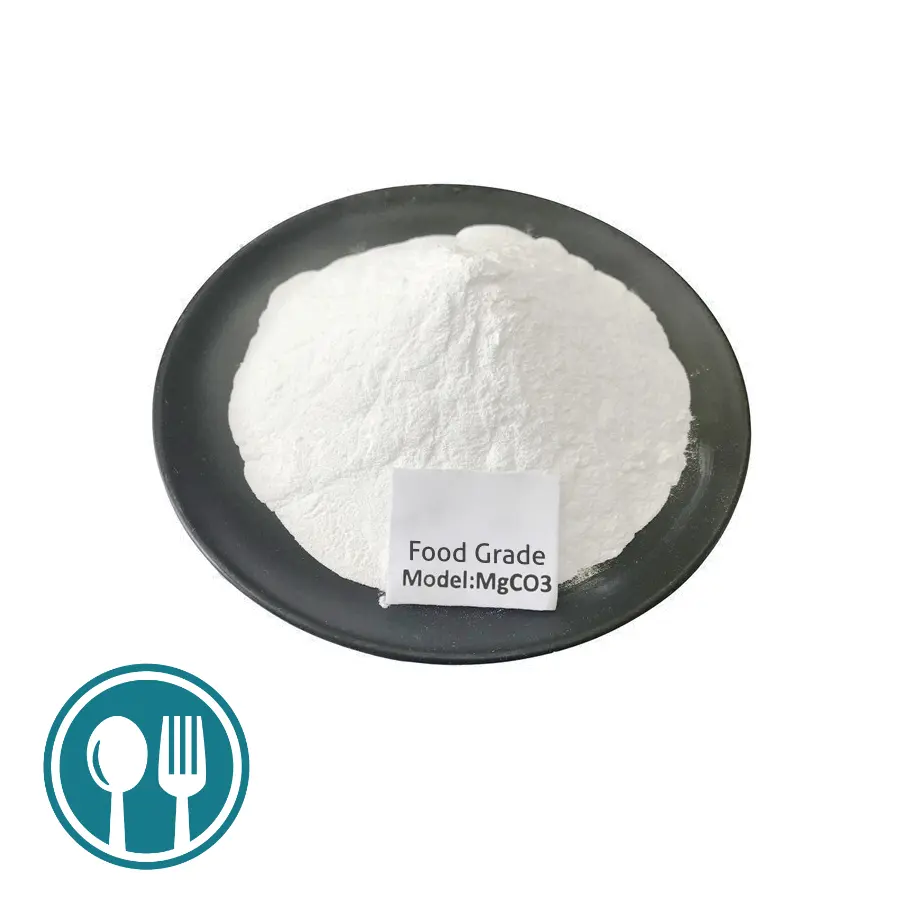Magnesium carbonate plays an important role in the global food industry as a multifunctional food additive. From bread to cookies, from toothpaste to flour improvers, magnesium carbonate is used everywhere. However, this widely used additive has also raised concerns about food safety.

Specific applications of magnesium carbonate in food industry
- Adjusting acidity and alkalinity: as an acid neutralizer, magnesium carbonate can effectively neutralize the acidic substances in food and adjust them to neutral or even alkaline, thus optimizing the texture of food and making it taste better.
- Thickening: By increasing the viscosity and texture of the food, it makes the food more delicate and improves the texture of the food.
- Moisturizing: Magnesium carbonate can lock the water in the food, prevent the food from losing its original flavor and texture due to drying, and prolong the shelf life of the food.
- Increase hardness: magnesium carbonate can increase the hardness of food, make the food more solid and sturdy, to meet the diversified needs of consumers for the taste of food.
- Anti-caking: Magnesium carbonate has excellent hygroscopicity, which can effectively prevent the caking of powdered food such as seasoning, milk powder, etc., and keep the looseness and fluidity of food.
- Bulking agent: In the processing of baked goods, pastries, cookies, etc., magnesium carbonate is used as a bulking agent, which can make the food produce air bubbles during processing and increase the volume and fluffiness of the food.
- Nutritional fortification: magnesium carbonate is rich in trace elements, such as magnesium, iron, calcium, etc. It can be used as a nutritional fortifier added to food to improve the nutritional value of food.
Limits of use and safety of magnesium carbonate in the food industry
Magnesium carbonate, as a food additive, should be used in quantities that do not exceed the limits of current good manufacturing practices. Although magnesium carbonate is a safe and effective food additive, the following points need to be noted during its use:
- Moderate dosage: the right amount of magnesium carbonate can give the best effect, while excessive use may affect the taste of food and even have adverse effects on human health.
- Use in combination: Magnesium carbonate is usually used in combination with other additives such as gelatin and pectin to achieve better results. However, it should not be mixed with food containing oxidizers to avoid chemical reaction and potential harm to human body.
- Preservation environment: Magnesium carbonate is easy to absorb moisture and carbon dioxide in the air, so it should not be exposed to the air for a long time, and should be kept in a dry environment to ensure its quality and stability.
Magnesium carbonate has a wide range of applications in the food industry and can effectively improve the quality and taste of food. However, it is necessary to follow the correct method of use and pay attention to the dosage and matching to ensure the safety and hygiene of food.
The main functions of magnesium carbonate in the food industry include acid neutralization, thickening and moisturizing. It can effectively neutralize acids in food and improve taste; increase the viscosity and texture of food to make it more delicate; and lock in moisture to prevent food from losing flavor due to drying. In addition, magnesium carbonate can also increase the hardness of food to meet the diversified needs of consumers for taste.
However, the use of magnesium carbonate is not without controversy. Excessive use of magnesium carbonate may affect the taste of food and even have adverse effects on human health. For example, long-term intake of large amounts of magnesium carbonate may lead to hypermagnesemia, causing liver, kidney and nerve damage. Therefore, the use of magnesium carbonate is strictly regulated in all countries. In China, magnesium carbonate is classified as a permitted food additive, but the scope of its use and the maximum amount of use are clearly defined.
It is worth noting that China has made significant progress in food safety regulation. Following the 2008 contamination of dairy products in China, the Chinese government stepped up its efforts to regulate food safety.The newly amended Food Safety Law in 2015 further improved the food safety regulatory system and raised the cost of violating the law. These measures have effectively curbed the high incidence of food safety incidents.
Nevertheless, compared with developed countries, China still has gaps in the use and regulation of food additives. For example, the European Union (EU) is more stringent in approving food additives and requires more comprehensive safety data. The U.S., on the other hand, has established a more comprehensive traceability system and is able to quickly recall problem products. These experiences are worth learning from China.
Looking ahead, the development of food additives such as magnesium carbonate is aimed at improving safety, enhancing functionality and reducing environmental impact. With the advancement of technology, we are expected to develop safer and more efficient food additives to provide consumers with healthier and tastier food choices.
Overall, magnesium carbonate, as an important food additive, plays an irreplaceable role in improving food quality and extending shelf life. However, its use must also strictly comply with relevant regulations to ensure food safety. Only under the dual role of scientific and technological innovation and strict supervision, we can truly realize the “safety on the tip of the tongue”.

